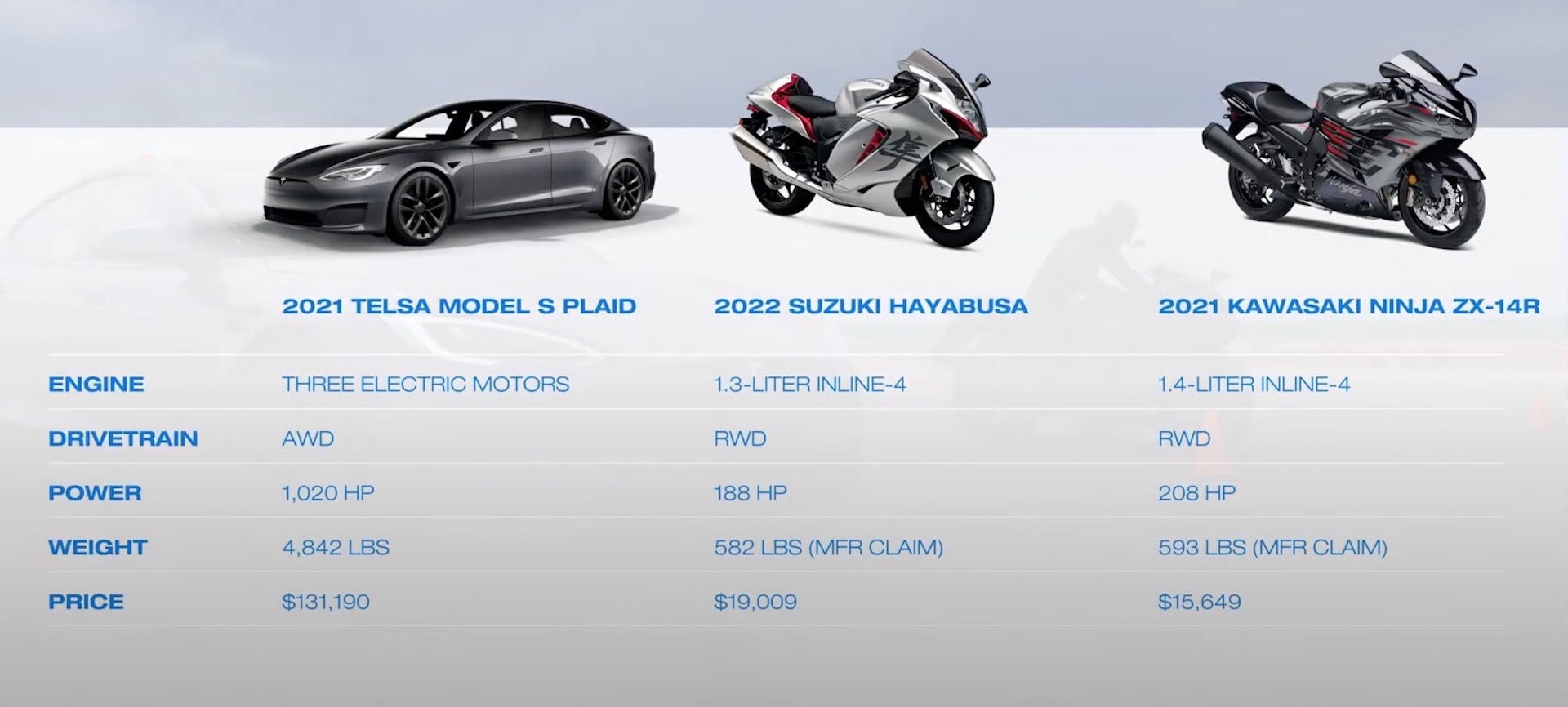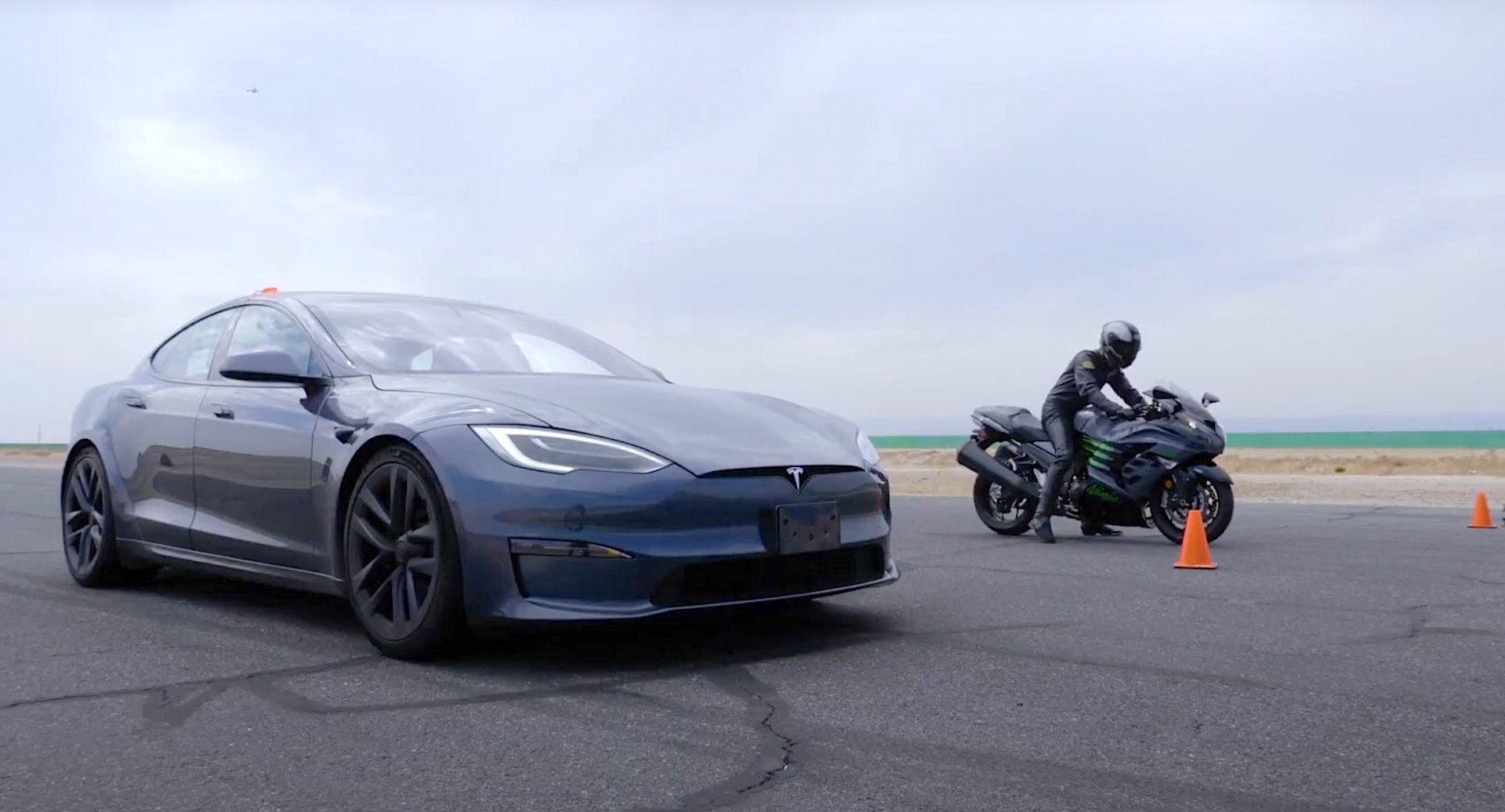Riding motorcycles can be a scary business. But the one thing riders of superbikes have never had to fear is taking on a production car in a roll-on race or a sprint from the traffic lights.
For decades, superbikes have been the fastest things on the road, whatever supercar drivers might try to tell you. Back in the early 1970s, only the most powerful of muscle cars and supercars could dip into the 13s on a quarter mile run in showroom trim. But a Kawasaki Z1, a big, 900-cc naked bike from the days before superbikes featured enclose bodywork, could blitz through the quarter in 12.6 seconds.
Two decades later, Yamaha’s FZR 1000 EXUP was the daddy of the two-wheel world. In the September 1991 issue of Performance Car magazine, one recorded a 10.9-second quarter, while Porsche’s hero car of the day, the 964 Turbo, couldn’t do better than 13.4 seconds in the same head-to-head feature. In recent years, only the fastest hypercars might give a big bike cause for concern, and the chances of meeting one on the road was next to zero.
Now though, it’s all change. Electric power has made even relatively innocuous-looking cars like the Tesla Model S almost unbeatable in the four-wheel sphere. And it seems even the previously untouchable two-wheelers can’t keep up.
Related: Biker Crashes And Nearly Kills Himself Trying To Overtake Classic Mini
Edmunds recently posted a video in which host Carlos Lago drag races a Tesla Model S Plaid against a Suzuki Hayabusa and a Kawasaki ZX-14R, two of the fastest factory bikes currently on sale. And neither could beat the Tesla in a race from a dead stop.
To be fair to the bikes, and their rider, Chris Moore, Carlos definitely had the easier time of it. The Tesla’s electric motors produce their maximum 1050 lbs-ft of torque just off idle, and distribute it to the ground via all four wheels. Pretty much all he has to do is drop the hammer and go.
Launching a bike is more complicated. You’re trying to send the power (188 hp in the case of the 1.3-liter Hayabusa) through just one wheel, and it’s a wheel with a skinny contact patch. Plus you’ve got to balance the clutch and gas just right to get the best launch, and then try to keep the nose from riding too high once you’ve got the back wheel hooked up.
Related: BMW Motorrad’s First M Bike Packs 209 HP
In the first couple of races between the Plaid and the Hayabusa, the bike’s rider battles with wheelies and the wind, and while he starts to make up ground by midways down the straight, it’s not enough to pass the Tesla by the line. Even in a roll-on race, where the bike would murder any normal car, the Plaid takes the win.
Switching to the 208 hp Kawasaki Ninja ZX-14R, things get a little cosier, and one of the races is a photo finish. I’ll not spoil the result, but the fact that a car, and not even a supercar but a four-door luxury sedan, can keep a bike like the ZX honest, is staggering.
Does Fastest Mean Most Fun?
Not that superbike fans are likely to ditch their leathers and trade their rides for a Plaid. While Lago is clearly impressed by the Tesla’s performance, he also remarks that “there’s no drama” to the way the Plaid goes about its record-breaking acceleration runs on the way to 60 mph in 2 seconds.
“You know I never thought I’d say a 9-second quarter mile could feel underwhelming” Lago remarks after one sortie down the strip, reinforcing that nagging suspicion we have that there’s more to a great performance car than pure speed. Things looked plenty dramatic for the bike rider, however.
But even if superbike riders can no longer claim to be piloting the fastest thing on the road, they’re still winning in terms of bang per buck. While a Plaid will set you back $131,190, a Hayabusa costs $19,009 and a ZX-14R, just $15,649, which is a steal for the amount of performance they offer.





